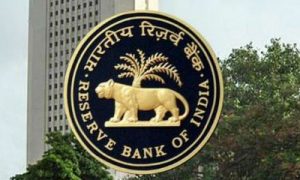The asset recycling craze that got under way in Australia with the 2013 leasing of Port Kembla and Port Botany near Sydney is reaching India. So is the fear that handing over control of public utilities to a small private sector will hurt the consumer.
The cash-strapped Indian government has identified 6 trillion rupees ($81 billion) in existing revenue-generating assets, which it will monetize over four years to fund an ambitious $1.5 trillion pipeline of new infrastructure. But while New Delhi aims to replicate the fundraising success overseas, it also needs to heed the Australian Competition and Consumer Commission Chairman Rod Sims’s warning last month: Privatize to increase the efficiency of the economy, or don’t privatize at all.
Policy makers in India envisage parting with revenue-earning operating concessions in exchange for upfront payments or investments. The deals will be structured as “contractual partnerships” with the state retaining long-term public ownership. However, to maximize their profit over a limited time frame, investors would naturally want to raise prices, limit competition or cut back on upkeep. Singapore had to nationalize its suburban trains and signaling systems because the main private operator had underinvested in maintenance, leading to frequent breakdowns and stranded, angry passengers.
Similarly, it’s important to prevent today’s lump-sum gains to the government from becoming a cost tomorrow. In New South Wales, where electricity prices doubled in five years after poles and wires were privatized, the government had to step in with an Energy Affordability Package to lower the burden on consumers. The Indian taxpayer, already struggling under extortionate levies on energy, simply can’t afford such largesse.
Without bureaucratic capability and regulatory acumen, the Indian program could become a transfer of taxpayer-funded assets to a handful of business groups. This is a concern because of the rising concentration of economic power in everything from transport to telecom. Airports and seaports are the stranglehold of billionaire Gautam Adani NSE 0.71 %’s group, which also wants to acquire Container Corporation of India Ltd., a state-owned logistics firm. The wireless carriage business, once teeming with a dozen operators, has effectively turned into a duopoly, led by Mukesh Ambani, India’s richest man.
Privatization of a state-owned aluminum maker only causes job-loss anxieties among its workers. Once control over utilities is out of the government’s hands for years, even decades, the broader public will worry about higher user charges slapped by operators of roads, railways, airports, power grids and gas pipelines.
The other takeaway from the Australian experience is to let consumers see for themselves if they’re getting a fair shake. As the Sydney Morning Herald wrote this year, the 2018 sale of 51% of WestConnex, a controversial motorway in Australia’s largest metropolis, limits the network’s “exposure to freedom of information requests and budget estimates hearings” besides diluting “the ability of the state Auditor-General to keep the project under scrutiny.”
It is also important to mind the gaps in institutional maturity. For an emerging market, India already has fairly well-established investment trusts and toll-operate-transfer structures. But does it have the legal and regulatory mechanisms to truly de-risk politically sensitive infrastructure before asking the private sector to put a price on it? Even where environmental clearances, land acquisition and construction are in the rear-view mirror and there’s certainty over future traffic, weak regulators can introduce their own hard-to-price risks.
Take aviation. After a year-and-a-half of Covid-19, India is still enforcing capacity caps and pricing floors and ceilings on flights, denying passenger footfall to airports to save some inefficient airlines. Such arbitrariness results from political economy considerations, which won’t go away in a hurry. The likes of Canada Pension Plan Investment Board, Brookfield Asset Management Inc., Australia’s Macquarie Group Ltd. and Singaporean sovereign wealth fund GIC Pte., as well as local financial institutions are all likely to bid for public assets on offer, and they may even win some, but they may never be on a par with entrenched domestic business groups and their ability to sway regulations.
Then there’s the state’s execution capability, called into question by long delays in selling government-run banks, the biggest life insurer, a large oil refinery and Air India Ltd., the national carrier. Frothy equity markets, resulting from a massive global and local liquidity glut, had presented policy makers with a golden opportunity to extract great value for assets, excluding Air India. That bus may have already left. Startups with no current earnings — and some with perhaps no future profits either — swooped in on public capital markets and swept the board. The government just kept waiting.
Bureaucratic delays might blight asset concessions, too. By the time New Delhi starts hawking them, the U.S. Federal Reserve could already be tapering its bloated balance sheet. Emerging-market assets may get the short-shrift. More so if it turns out that the coronavirus will keep coming back in waves to countries slow to reach universal vaccination, or unable to afford repeated boosters.
Timing, though, isn’t everything. Finding the right balance between public and private interests will determine success of a patient asset recycling program — not just the amount of money raised this year or next. That’s perhaps the most important lesson from Down Under.





































